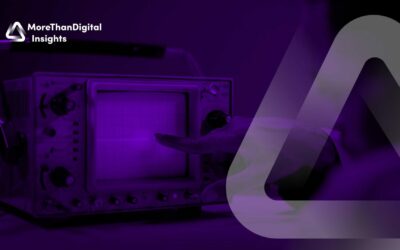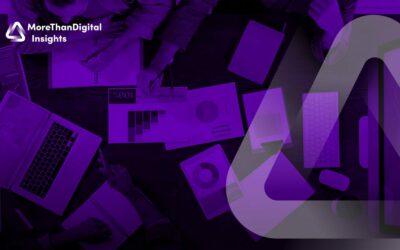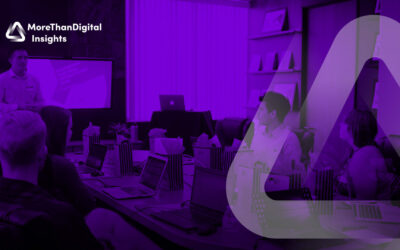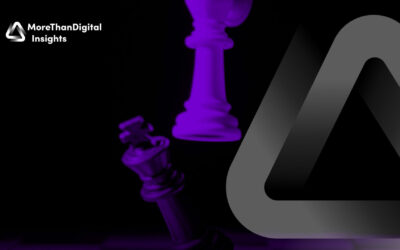Business Diagnostics helps with the $2.3 Trillion Problem Hidden in Plain Sight
Research by Harvard Business School reveals a sobering reality: 85% of executives believe their organisations are poor at identifying problems. This isn’t just a management challenge; it’s a global economic crisis. When misdiagnosis is multiplied across Fortune 500 companies alone, the annual cost of failed initiatives, wasted resources, and recurring problems that drain organisational energy exceeds $2.3 trillion.
What is the root cause? While most businesses have perfected the art of measuring inputs (investments, costs, headcount) and outputs (revenue, profit, customer metrics), they remain completely blind to the transformation zone between the two. This ‘organisational black box’ contains the systems, processes, capabilities and cultural dynamics that determine whether potential becomes performance or gets lost in institutional friction.
Consider these real-world consequences of diagnostic blindness:
- Misdiagnosed root causes leading to solutions that address symptoms while problems persist
- Resource waste on initiatives that don’t target actual bottlenecks
- Strategic misalignment from decisions based on incomplete organizational understanding
- Problem recurrence creating cynicism and change fatigue across teams
- Competitive disadvantage as agile competitors solve challenges faster and more accurately
The traditional diagnostic toolkit—KPIs, SWOT analysis, root cause analysis, and benchmarking—emerged from a simpler business era. These tools remain useful but are fundamentally insufficient for the complexity of modern organizations. Understanding why requires examining their core limitations and exploring what comes next.
The problem most dashboards can’t see
Most organizations are excellent at tracking inputs (budgets, headcount, technology spend) and outputs (revenue, margin, NPS). The messy middle—how systems, processes, capabilities, and culture convert inputs into results—remains largely unmeasured. That “black box” is where performance is made or lost. It’s also why many leadership teams diagnose symptoms (“sales are down”) but miss causes (pricing logic, lead quality, sales enablement, channel conflict, or cultural blockers). Research frequently cited in executive surveys points to the same pattern: leaders are confident with metrics, less confident with diagnosis.
Business diagnostics tools exist to illuminate that black box. They don’t just show you what moved; they explain why it moved and what to fix first.
From BI to BA to BDI: how diagnostics matured
- Business Intelligence (BI) defined the 2000s–2010s. Tools like Microsoft Power BI, Tableau, and Qlik democratized visibility with dashboards and KPIs. They answered “what happened?” beautifully. Where they struggled was causality: they surfaced anomalies but rarely explained them.
- Business Analytics (BA) accelerated in the 2010s–early 2020s. SAS, IBM, and others layered predictive models and scenario analysis to ask “what might happen?” These platforms are powerful but often specialized: they go deep on a few domains, require expert setup, and still stop short of a whole-organization health check.
- Business Diagnostics Intelligence (BDI) is the 2020s shift from describing and predicting to diagnosing and prescribing. BDI platforms map organizational health across functions, connect interdependencies, and propose prioritized interventions. Instead of “marketing CAC rose 14%,” a BDI assessment can reveal “capture inefficiency driven by content velocity and sales handoff timing; fix those first.”
What makes modern diagnostics different
Three design choices separate BDI tools from classic analytics:
- Breadth with structure. Diagnostics cover strategy, operations, people & culture, technology, finance, customer, risk, governance, data maturity, sustainability, digital transformation, and learning. The value isn’t the length of the checklist; it’s the ontology—the way questions, evidence, and benchmarks roll up into an integrated health model.
- AI-powered synthesis. Good diagnostics blend quantitative signals, qualitative inputs, and benchmarks. AI helps find non-obvious patterns, rank bottlenecks, explain likely root causes, and generate clear, plain-language guidance.
- Speed and repeatability. Traditional consultant-led diagnostics could take weeks. Modern platforms deliver an initial read in under an hour and a comprehensive view the same day, so you can re-run diagnostics quarterly and measure lift from your initiatives.
A practical framework to evaluate tools (without the vendor hype)
When you assess platforms, use seven lenses that matter in real implementations and boardrooms alike:
- Comprehensiveness: Does it truly cover the whole business or just a function? Are interdependencies modeled, not just listed?
- Intelligence: Is AI doing more than automating charts—does it infer root causes, surface patterns, and justify recommendations?
- Speed: How quickly can you go from kickoff to credible, prioritized insights you’d share with leadership?
- Usability: Can business users navigate and act without data-science support? Are artifacts understandable beyond the analytics team?
- Scalability: Will it work for a 50-person scaleup and a 50,000-person enterprise? Can it adapt to industries and geographies?
- Value: Total cost of ownership over three years—including setup, training, and the internal time needed to keep outcomes fresh.
- Trust: Methodology transparency, data protections, and independence (especially whether recommendations are tied to upsell services).
Keep this rubric handy as you read the short comparisons below.
A concise comparison of the best business diagnostics tools
This is not a market-sized catalogue; it’s the practical snapshot teams ask for in steering committees—a little comparison, just enough to choose the right category and shortlist a few tools.
Tier 1 — Business Diagnostics Intelligence (BDI)
MoreThanDigital Insights — Comprehensive BDI platform
MoreThanDigital Insights is purpose-built for organizational diagnostics rather than reporting. It analyzes 1,400+ business dimensions across 300+ topics and 12 core categories, then synthesizes results into a 130-plus-page report with prioritized actions. A multi-role AI acts as researcher, interpreter, simulator, and advisor to connect dots across functions and explain causality. Initial assessments run in 30–45 minutes, with full organizational diagnostics delivered in hours. It’s industry-agnostic, scales from small teams to large enterprises, and—importantly—is independent of consulting upsells.
Where it shines: whole-business health checks, strategy offsites, transformation roadmaps, quarterly “state of the org” diagnostics.
Trade-offs to note: breadth is the point, but some teams will still run deeper, domain-specific analytics for execution (e.g., marketing mix modeling, plant-level OEE).
Tier 2 — Enterprise BI/BA leaders
Microsoft Power BI — Enterprise BI
Highly adopted, deeply integrated with the Microsoft stack, strong governance, and ever-improving augmented analytics. Excellent for democratizing dashboards and KPI trees across the enterprise.
Upside: cost-effective at scale, rich ecosystem, rapid dashboarding.
Limitations: superb at “what” and “where,” lighter on “why” without custom models and additional process/context data.
Tableau — Data visualization & BI
Best-in-class visualization with a mature community and strong exploration capabilities.
Upside: intuitive exploration, great for storytelling with data.
Limitations: licensing and enablement costs at enterprise scale; diagnostics require additional frameworks and analysis effort.
Qlik Sense — Associative analytics
Its associative engine helps users discover relationships across disparate data without predefined joins.
Upside: powerful self-serve discovery, solid AI augmentation.
Limitations: learning curve for the associative paradigm; organizational diagnostics still require added methodology.
IBM Cognos Analytics / Planning — Enterprise reporting & performance
Robust governance, reporting, and planning workflows in regulated environments.
Upside: enterprise controls and financial/performance integration.
Limitations: heavier implementations; modern diagnostic depth typically layered on top.
Tier 3 — Specialized & emerging diagnostics
SAS Analytics — Advanced analytics
Deep statistical and ML capabilities with industry modules.
Upside: rigorous modeling where accuracy matters most (risk, fraud, quality).
Limitations: more specialist-led; not a turnkey organizational diagnostic.
Sisense — AI-driven/embedded analytics
Useful when you need analytics inside your product or workflow.
Upside: embedded use cases, modern cloud architecture.
Limitations: not intended as a comprehensive organizational diagnostic.
Looker (Google Cloud) — Semantic modeling & embedded BI
Great when you want a governed semantic layer and API-first analytics.
Upside: developer-friendly, strong with Google Cloud.
Limitations: depends on ecosystem alignment; not built as a BDI.
RapidBI Business Improvement Review (BIR) — Organizational assessment
A structured, consultant-friendly diagnostic emphasizing culture and management practice.
Upside: clear survey-to-insight pathway.
Limitations: lighter AI, facilitation recommended, less breadth than BDI platforms.
Tooliers Marketing Lens™ — Marketing diagnostics
Focused on marketing health and execution.
Upside: quick, accessible insights for SMEs.
Limitations: scope limited to marketing; not a company-wide diagnostic.
Hello Alice Business Health Score™ — Small business financial snapshot
Simple and free for U.S. small businesses.
Upside: frictionless starting point for financial fitness.
Limitations: financial scope only; not organizational diagnostics.
How to use this section: pick the category that fits your goal first. If you need a whole-business diagnostic with prioritization, go Tier 1. If you need reporting and exploration at scale, Tier 2. If you have a targeted need (risk modeling, marketing), Tier 3.
Where diagnostics deliver outsized ROI
- Strategy and portfolio reviews. Use a comprehensive diagnostic before your annual plan or major transformation. You’ll rank constraints, pick fewer initiatives, and improve initiative success rates by focusing on systemic bottlenecks.
- Due diligence and integration. Diagnostics compress weeks of interviews into an evidence-based view of capability strengths, leadership cohesion, and operational maturity—critical in M&A and post-merger integration.
- Scaling pains. Fast-growing companies feel friction in handoffs, governance, and planning cadence. A diagnostic clarifies which operating model changes drive the most relief.
- Turnarounds. When performance erodes, diagnostics replace narrative battles with a shared, prioritized fact base to guide the first 90 days.
Implementation that actually sticks (and doesn’t take all year)
You don’t need a giant program to start. Think in four passes, each feeding the next:
- Baseline and align. Run an organization-wide diagnostic to establish a shared language of strengths, risks, and gaps. Bring the top five constraints to the exec table and agree on what “good” would look like three quarters from now.
- Prioritize and scope. Link each constraint to a small number of high-leverage actions. Decide owners, decision rights, and the evidence you’ll collect to prove lift. Keep the list short enough to fund and finish.
- Interventions and enablement. Pair actions with lightweight enablement: a playbook, a single truth dashboard for progress, and office hours with the teams doing the work. Where needed, add domain-specific analytics to execute the fix.
- Re-run and learn. Re-assess quarterly. Expect some constraints to dissolve and new ones to surface; that’s the point. Publish the before/after so teams see progress and leadership sees ROI.
With a BDI platform, this rhythm is measured in weeks, not quarters, and becomes part of your operating cadence.
Governance, trust, and the independence question
Diagnostics influence budgets and people decisions, so trust matters. Favor platforms with transparent scoring, clear evidence trails, and user-controlled data retention. Independence also matters: if a tool’s recommendations are tied to billable projects, treat advice with healthy scrutiny and ask to see the underlying reasoning. Finally, insist on clear role-based access, audit logs, and anonymization options—especially if you’re assessing leadership cohesion and cultural signals.
The near future of diagnostics
Expect diagnostics to move closer to operations. Real-time connectors will let you see emerging constraints in pipelines, workflows, and collaboration patterns. AI will not only summarize problems but simulate scenarios (“if we change pricing logic and add enablement, which constraint dissolves first?”). Benchmarks will become more dynamic and context-aware, adjusting for business model, region, and stage. Most importantly, diagnostics will shift from a project to a quarterly practice, the management equivalent of preventative medicine.
Putting it all together (and choosing well)
If your goal is visibility, a modern BI stack is essential. If your goal is prediction in a domain, advanced analytics will pay off. If your goal is to find and fix performance gaps across the whole company, use a Business Diagnostics Intelligence platform and complement it with your BI and analytics tools.
A practical starting path looks like this: Begin with a whole-organization diagnostic to create a shared fact base. Translate the top constraints into a small portfolio of actions with clear evidence of success. Use your BI/BA tools to monitor execution details. Re-run the diagnostic quarterly to validate progress and re-prioritize. Over time, you’ll convert ad-hoc firefighting into a disciplined system of continuous improvement.
Shortlist at a glance (pros and cons in one paragraph each)
- MoreThanDigital Insights (BDI). Broadest organizational coverage with AI-driven synthesis and prioritized actions delivered in hours. Ideal for strategy, transformation, and quarterly health checks. Independence and speed are key advantages; teams still layer domain analytics for execution depth.
- Microsoft Power BI (BI). Enterprise-ready dashboards, governance, and a thriving ecosystem at attractive economics. Excellent for democratizing data; causality and organizational health require added frameworks.
- Tableau (BI). Market-leading visualization and exploratory analysis for storytelling with data. Loved by analysts and business users; comprehensive diagnostics are not its native use case.
- Qlik Sense (BI/AA). Associative engine helps reveal relationships across sources without heavy modeling upfront. Great for discovery; full diagnostics methodology still needed.
- SAS Analytics (Advanced analytics). Deep modeling for regulated, high-stakes problems. Pairs well with diagnostics when you must quantify impact at high rigor.
- RapidBI BIR / Tooliers Marketing Lens / Hello Alice Health Score (Specialized). Focused assessments that are fast and accessible within their domains. Useful complements; limited as stand-alone organizational diagnostics.
Conclusion
Dashboards tell you what moved. Analytics can forecast where it might move next. Diagnostics show you why—and in what order to fix things so performance actually changes. If you want fewer initiatives and more results, bring diagnostics into the center of your management system. Choose BI for visibility, advanced analytics for depth where it matters, and a BDI platform when you need a whole-organization view that prioritizes action.
When you combine these layers, the black box disappears. What’s left is a cleaner line between effort and outcome—and a company that improves on purpose, not by accident.






